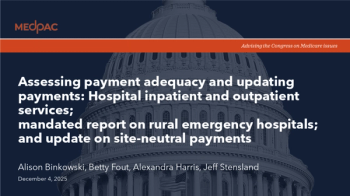
AI-powered retina tracker shows near-perfect accuracy in detecting diabetic eye disease
Key Takeaways
- SMART AI application detects diabetic retinopathy with over 99% accuracy, enhancing early diagnosis and accessibility through internet-connected devices.
- Trained on diverse global data, SMART distinguishes diabetic retinopathy from similar diseases, validated by international healthcare professionals.
AI-driven retina tracker advances diabetic retinopathy detection, enabling rapid, accurate screenings and expanding access to eye care globally.
A new artificial intelligence-powered retina tracker can detect
The application, called the Simple Mobile AI Retina Tracker (SMART), uses deep learning algorithms to analyze retinal fundus images through internet-connected devices, including basic smartphones.
“The SMART AI application enables ophthalmologists to streamline patient screening, empowers primary care providers to incorporate eye exams into routine visits, and expands access to high-quality retinal assessments in regions lacking specialized ophthalmic care," said presenting author Jansi Rani Sethuraj, R.N., of the University of Texas Health Sciences Center in Houston.
The SMART application was trained using thousands of anonymized retinal images sourced from diverse global populations across six continents. The images were compiled and analyzed by researchers Ramya Elangovan and Kavin Elangovan of AIM Doctor in Houston. Their deep learning models not only detected and staged diabetic retinopathy with near-perfect accuracy, but also distinguished it from similar eye diseases.
Health care professionals from international institutions independently validated the application’s performance, highlighting its reliability and adaptability in different settings.
“By democratizing eye care through universally accessible mobile technology, this innovation has the potential to screen billions globally, reducing vision loss from diabetic retinopathy while transforming healthcare delivery systems,” said Elangovan Krishnan, Ph.D., of AIM Doctor, who served as the project’s chief mentor. “This research proves that AI can be a force for good, bridging gaps in care and bringing hope to millions at risk of losing their sight.”
Advances in AI and retinal imaging are reshaping eye care
The development of AI-powered tools like SMART reflects a broader surge in technological innovation aimed at improving retinal diagnostics and access to vision care.
In recent years, researchers have leveraged increasingly sophisticated deep learning and computer vision models to interpret retinal fundus photographs and optical coherence tomography (OCT) scans. These tools are now capable of detecting a wide range of retinal conditions, including age-related macular degeneration, glaucoma, hypertensive retinopathy, and signs of neurological diseases such as Alzheimer’s—often with performance rivaling or exceeding that of trained ophthalmologists.
One of the most promising trends is the integration of AI-based diagnostic tools into portable devices, such as smartphones and low-cost retinal cameras. This enables point-of-care screening in primary care settings, pharmacies, and rural clinics—environments that traditionally lack access to eye specialists. AI can analyze images in seconds, guiding immediate referrals for advanced care when needed.
Another emerging development is the use of AI to support longitudinal tracking of disease progression. Algorithms are being trained to not only detect disease but to quantify its severity over time and predict future risk, giving clinicians a powerful tool for personalized treatment planning.
Combined with cloud-based data sharing and telemedicine platforms, these innovations are opening doors to a more proactive, global approach to eye health—especially in low- and middle-income countries where the burden of diabetic retinopathy and other vision-threatening conditions remains high.
While regulatory pathways and ethical concerns remain important considerations, the rapid evolution of AI in retinal diagnostics underscores its potential to transform eye care delivery, making earlier detection more scalable, equitable, and efficient than ever before.
Newsletter
Stay informed and empowered with Medical Economics enewsletter, delivering expert insights, financial strategies, practice management tips and technology trends — tailored for today’s physicians.















